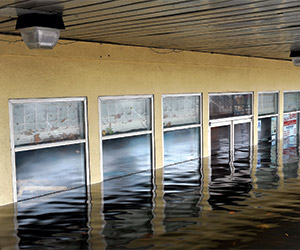The Building Industry Is Working to Reduce Long-term Costs and Limit Disruptions of Extreme Events
ERA Executive Director Jared Blum has written an article published by Roofing magazine that discusses the importance of resiliency – the ability to prepare for and adapt to changing conditions and to withstand and recover rapidly from deliberate attacks, accidents, or naturally occurring threats or incidents – in the building industry. He writes:
“Hurricane Sandy fostered innovation by demonstrating that when buildings are isolated from the supply of fresh water and electricity, roofs could serve an important role in keeping building occupants safe and secure. Locating power and water sources on rooftops would have maintained emergency lighting and water supplies when storm surges threatened systems located in basement utility areas. Thermally efficient roofs could have helped keep buildings more habitable until heating and cooling plants were put back into service.
In response to these changes, there are many opportunities for industry growth and adaptation. Roof designs must continue to evolve to accommodate the increasing presence of solar panels, small wind turbines and electrical equipment moved from basements, in addition to increasing snow and water loads on top of buildings. Potential energy disruptions demand greater insulation and window performance to create a habitable interior environment in the critical early hours and days after a climate event. Roofing product manufacturers will work more closely with the contractor community to ensure that roofing installation practices maximize product performance and that products are tested appropriately for in-situ behavior.”
For more information on the importance of resiliency in buildings, check out ERA’s recent blog post on the topic.

